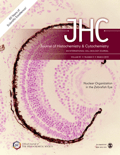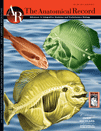
FOLIA HISTOCHEMICA ET CYTOBIOLOGICA
Scope & Guideline
Empowering Scientists with Open Access to Cutting-edge Research
Introduction
Aims and Scopes
- Histological and Cytological Techniques:
The journal focuses on the development and application of advanced histological and cytological methods, including immunocytochemistry and digital morphology, to analyze tissue and cellular architecture. - Pathophysiology and Disease Mechanisms:
Research published in the journal often investigates the underlying pathophysiological mechanisms of diseases, including cancer, autoimmune disorders, and metabolic diseases, utilizing animal models and cellular assays. - Molecular Biology and Therapeutic Approaches:
The journal explores the molecular pathways involved in disease processes and the therapeutic potential of various compounds, including natural products and engineered biomolecules, highlighting translational research. - Comparative Anatomy and Histology:
FOLIA HISTOCHEMICA ET CYTOBIOLOGICA includes studies on comparative histology and anatomy across different species, enhancing the understanding of evolutionary biology and functional adaptations. - Stem Cell Biology and Regenerative Medicine:
The journal features research on stem cell biology, focusing on the mechanisms of differentiation and potential applications in regenerative medicine and tissue engineering.
Trending and Emerging
- Inflammation and Immune Response:
There is a growing focus on the role of inflammation and immune responses in various diseases, particularly in cancer and autoimmune conditions, which is critical for understanding disease progression and developing new therapies. - Mitochondrial Function and Metabolism:
Research emphasizing mitochondrial dynamics and metabolism is trending, particularly in relation to cellular stress responses and their implications in diseases like diabetes and neurodegeneration. - Nanotechnology and Drug Delivery Systems:
Emerging studies are increasingly exploring the use of nanotechnology for drug delivery and therapeutic applications, particularly in cancer treatment, highlighting innovation in treatment modalities. - Biomarkers in Cancer Diagnosis and Prognosis:
There is a notable trend towards identifying and validating biomarkers for cancer diagnosis and prognosis, reflecting the journal's commitment to translational research that can impact clinical practice. - Exosome and Stem Cell Research:
Research on exosomes derived from stem cells and their therapeutic potential is gaining prominence, aligning with the growing interest in regenerative medicine and cell-based therapies.
Declining or Waning
- Traditional Histopathology:
There has been a noticeable decrease in studies focusing solely on traditional histopathological analyses without integrating molecular or immunological approaches, possibly due to the increased emphasis on more comprehensive methodologies. - Basic Morphological Studies:
Research centered around basic morphological descriptions without functional or mechanistic insights appears to be declining, as the journal is increasingly prioritizing studies that connect structure to function. - Animal Model Studies with Limited Relevance:
While animal models are essential, there is a trend away from studies that do not translate well to human health or disease, indicating a shift towards more clinically relevant research.
Similar Journals

CELL AND TISSUE RESEARCH
Championing Quality Research in Histology and Cell DynamicsCELL AND TISSUE RESEARCH, published by Springer, is a premier journal dedicated to advancing the field of cell biology, histology, pathology, and forensic medicine. With a proud history dating back to its foundation in 1924 and continuing its legacy, this journal has established itself as a vital source for innovative research, facilitating the dissemination of significant findings that contribute to the understanding of cellular and tissue dynamics. Hailing from Germany, the journal exhibits an impressive standing in the academic community with a 2023 impact factor reflected in its category quartiles: Q2 in Cell Biology, Q1 in Histology, and Q1 in Pathology and Forensic Medicine. It ranks notably within multiple Scopus categories, including 32/208 in Pathology and Forensic Medicine and 13/62 in Histology, showcasing its high percentile rankings of 84th and 79th, respectively. Researchers, professionals, and students benefit from its extensive coverage and rigorous peer-review process that ensures the integrity and relevance of its published works, thus making it an essential resource in the scientific community. While it operates under a subscription model, its commitment to quality and impact makes it an indispensable journal for anyone engaged in cellular and tissue research.

BMC Molecular and Cell Biology
Unleashing innovative research in molecular and cell biology.BMC Molecular and Cell Biology is a forward-thinking open-access journal published by BMC, specializing in the vital fields of molecular biology and cell biology. Since its inception in 2019, the journal has carved a niche for itself, ranking in the Q3 quartile in both Cell Biology and Molecular Biology categories as of 2023. With an ISSN of N/A and an E-ISSN of 2661-8850, the journal provides a platform for groundbreaking research, high-quality reviews, and innovative methodologies. Situated in the United Kingdom, BMC Molecular and Cell Biology promotes a diverse range of studies, addressing fundamental questions in biology that resonate with both experts and new researchers alike. The journal's commitment to open access ensures that valuable findings are readily available to the global scientific community, fostering collaboration and knowledge-sharing across disciplines. Researchers aiming to contribute to the field of cell and molecular biology will find this journal an indispensable resource for both publishing and staying informed on the latest advances.

JOURNAL OF HISTOTECHNOLOGY
Advancing histotechnology for a healthier tomorrow.JOURNAL OF HISTOTECHNOLOGY, published by Taylor & Francis Ltd, is a leading academic journal dedicated to advancing the field of histotechnology, which plays a crucial role in both clinical and research settings. With an established history since 1977, this journal serves as a critical platform for researchers, professionals, and students engaged in the intricate study of tissue processing, staining techniques, and microscopic analysis. It is currently indexed in reputable databases, reflecting its commitment to scientific rigor, with a notable presence in categories such as Anatomy, Histology, and Medical Laboratory Technology. Despite its open access status being limited, the Journal of Histotechnology maintains a respectable impact factor and ranks within the third quartile for Anatomy and Medical Laboratory Technology, and fourth quartile for Histology in 2023, emphasizing its relevance in the scholarly community. As the field continues to evolve, this journal aims to foster innovation and dissemination of knowledge within histotechnology, making it an essential resource for those looking to further their expertise and contribute to the advancements in this vital area of health sciences.

JOURNAL OF HISTOCHEMISTRY & CYTOCHEMISTRY
Pioneering Insights in Histochemistry and CytochemistryWelcome to the JOURNAL OF HISTOCHEMISTRY & CYTOCHEMISTRY, a premier platform for the dissemination of cutting-edge research in the fields of anatomy and histology. Published by SAGE PUBLICATIONS LTD, this esteemed journal has been a cornerstone of academic inquiry since its inception in 1953 and continues to play a vital role in advancing our understanding of cellular structure and function. With an impressive Impact Factor reflected in its rank as Q1 in both Anatomy and Histology categories, the journal ranks #5 out of 48 in Medicine Anatomy and #17 out of 62 in Medicine Histology, making it an essential resource for researchers and professionals alike. The journal provides a rigorous peer-review process and encourages submissions that enhance the scientific community's knowledge. As a vital resource for students, professionals, and researchers focusing on histochemical methodologies, the JOURNAL OF HISTOCHEMISTRY & CYTOCHEMISTRY offers insights into the latest advancements and critical debates within this dynamic discipline.

Anatomical Record-Advances in Integrative Anatomy and Evolutionary Biology
Advancing the Frontiers of Anatomy and Evolution.Anatomical Record-Advances in Integrative Anatomy and Evolutionary Biology, an esteemed journal published by WILEY, serves as a pivotal platform for scholars in the fields of anatomy, biotechnology, ecology, evolutionary biology, and histology. With an ISSN of 1932-8486 and an E-ISSN of 1932-8494, this journal has demonstrated its academic rigor by maintaining a Q2 ranking across multiple relevant categories, including Anatomy and Biotechnology, and consistently achieving a high Scopus ranking in its respective fields. Its scope, covering integrative approaches to anatomical research and evolutionary studies, fosters interdisciplinary collaboration and innovation. Researchers and practitioners can access the journal through various open-access options, ensuring that groundbreaking findings are disseminated widely. As a vital resource for advancing knowledge and exploring emerging trends, this journal greatly contributes to the understanding of biological systems and evolutionary processes, making it an essential read for those dedicated to pushing the boundaries of their respective disciplines.

HISTOLOGY AND HISTOPATHOLOGY
Unlocking the Mysteries of Disease MechanismsHISTOLOGY AND HISTOPATHOLOGY, published by F HERNANDEZ, is an esteemed academic journal dedicated to advancing the fields of histology and pathology. With its ISSN 0213-3911 and E-ISSN 1699-5848, this journal has been a crucial resource for researchers and professionals since its inception in 1986. The journal enjoys a strong reputation, evidenced by its Q2 category rankings in both Histology and Pathology & Forensic Medicine as of 2023, positioning it within the top tier of scholarly publications. With Scopus rankings placing it at Rank #74/208 in Medicine - Pathology and Forensic Medicine and Rank #31/62 in Medicine - Histology, it proves to be an essential platform for disseminating significant research findings and innovations. Although the journal is not open access, it is committed to providing high-quality, peer-reviewed articles that cater to the needs of its academic community. With a focus on fostering a deeper understanding of tissue structure and disease mechanisms, HISTOLOGY AND HISTOPATHOLOGY serves as an indispensable resource for students, researchers, and practitioners alike, facilitating the exchange of knowledge and pioneering research in these vital areas of study.

FOLIA MORPHOLOGICA
Championing Rigorous Science in Morphological StudiesFOLIA MORPHOLOGICA is a prominent academic journal dedicated to advancing the fields of anatomy and histology. Published by VIA MEDICA since 1952, this journal serves as a critical platform for the dissemination of high-quality research, offering valuable insights into morphological studies. With an impact factor reflective of its dedication to rigorous scientific evaluation, FOLIA MORPHOLOGICA is recognized within the Q3 category in both anatomy and histology as of 2023, indicating its substantial contribution to these vital areas of medical science. Although currently not an open-access journal, it provides essential access options through various academic databases, ensuring that important findings are reachable by researchers, healthcare professionals, and students globally. The journal's scope encompasses a wide range of topics related to morphological sciences, making it a vital resource for those looking to stay at the forefront of anatomical and histological research. FOLIA MORPHOLOGICA remains dedicated to fostering scholarly communication and innovation, continuously aiming to enhance the scientific understanding of the intricate structures that underpin biological functions.

Genes & Diseases
Shedding light on the genetic foundations of disease.Genes & Diseases, published by KEAI PUBLISHING LTD, is a premier open-access journal dedicated to advancing the fields of genetics, biochemistry, and molecular biology. Established in 2014 and headquartered in Beijing, China, this journal has quickly risen to prominence, securing a place in the prestigious Q1 quartile in Biochemistry and Genetics (clinical), as well as Q2 in Cell Biology and Q1 in Molecular Biology as of 2023. With a commitment to disseminating cutting-edge research, Genes & Diseases serves as a critical platform for researchers, professionals, and students alike, ensuring that high-quality scientific work is openly accessible to the global community. The journal's exceptional impact is underscored by its selective Scopus rankings, which reflect its influence and relevance in key scientific domains, making it an essential resource for those exploring the intersections of genetics and disease pathology.

POSTEPY BIOLOGII KOMORKI
Championing Innovative Research in Cell BiologyPOSTĘPY BIOLOGII KOMÓRKI is a pivotal journal in the field of cell biology, published by the renowned Polskie Towarzystwo Anatomiczne. Since its inception, this journal has been dedicated to advancing scientific knowledge through the dissemination of high-quality research articles, reviews, and original studies focused on cellular structure and function. Although POSTĘPY BIOLOGII KOMÓRKI does not currently operate as an open-access journal, it remains a significant resource for researchers and professionals alike, contributing to critical discussions and findings in the biological sciences. The journal has undergone coverage discontinuation in Scopus, yet it continues to serve as an essential platform in Poland for scholarly exchange in cellular and anatomical research. Situated at the Centrum Medyczne Kształcenia Podyplomowego in Warsaw, it aims to bridge gaps in understanding and nurture academic growth among students and professionals in the biological sciences.

DNA AND CELL BIOLOGY
Fostering Innovation in Biological ResearchDNA AND CELL BIOLOGY, published by Mary Ann Liebert, Inc, is a distinguished journal in the realms of cell biology, genetics, and molecular biology, holding a notable position in its Q3 and Q2 quartile rankings across multiple academic categories as of 2023. With an ISSN of 1044-5498 and an E-ISSN of 1557-7430, this journal has been a pivotal platform for the dissemination of cutting-edge research since its inception in 1990, extending its coverage through 2024. Situated in the United States, the journal offers high-quality peer-reviewed articles, exploring significant advancements in biological sciences while fostering interdisciplinary collaborations within the research community. Though it currently does not offer open access, subscribed institutions and individual readers benefit from its rich repository of knowledge. The journal's rigorous standards and impactful content make it an essential resource for researchers, professionals, and students alike, aiming to stay at the forefront of discoveries influencing DNA and cellular dynamics.